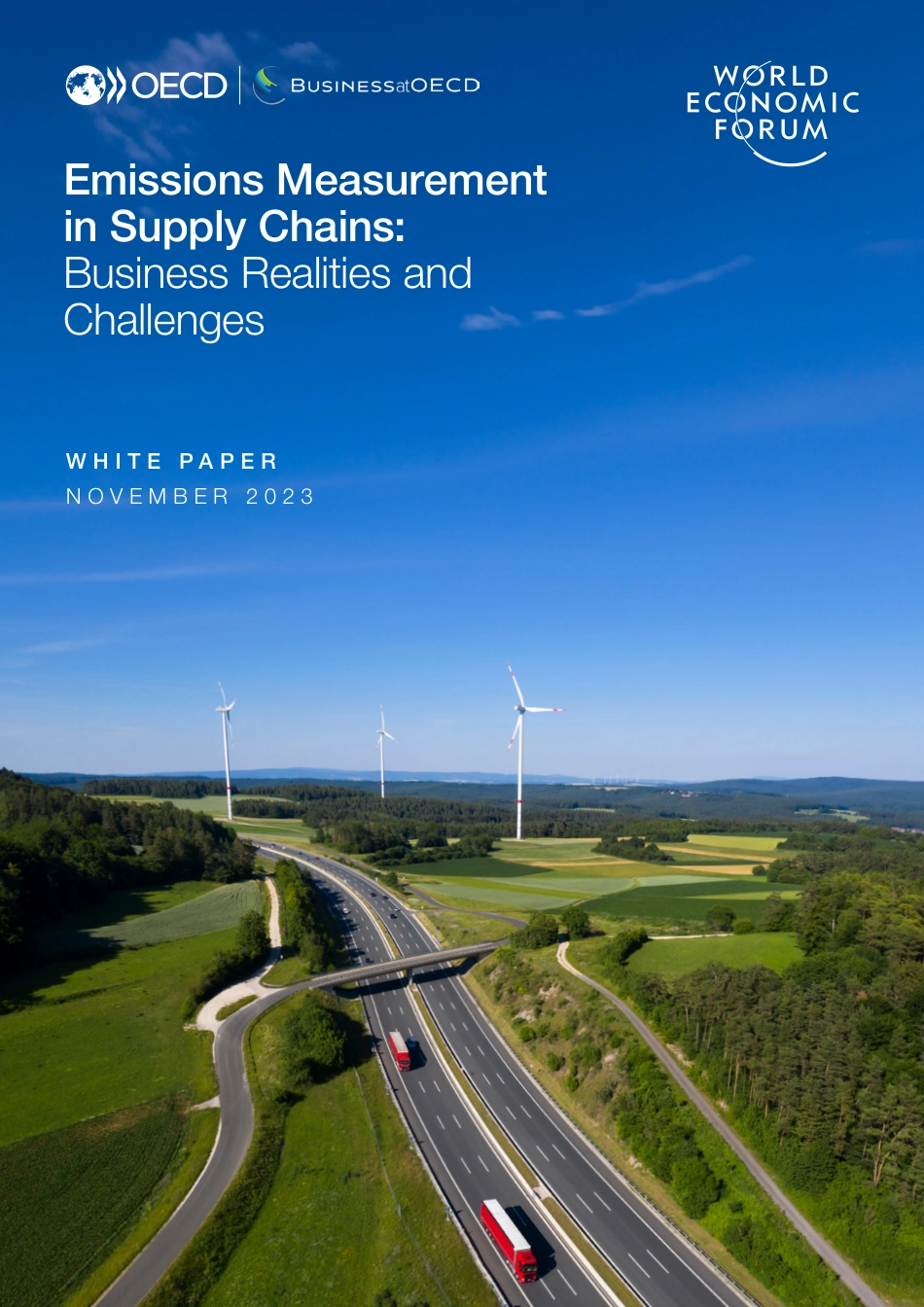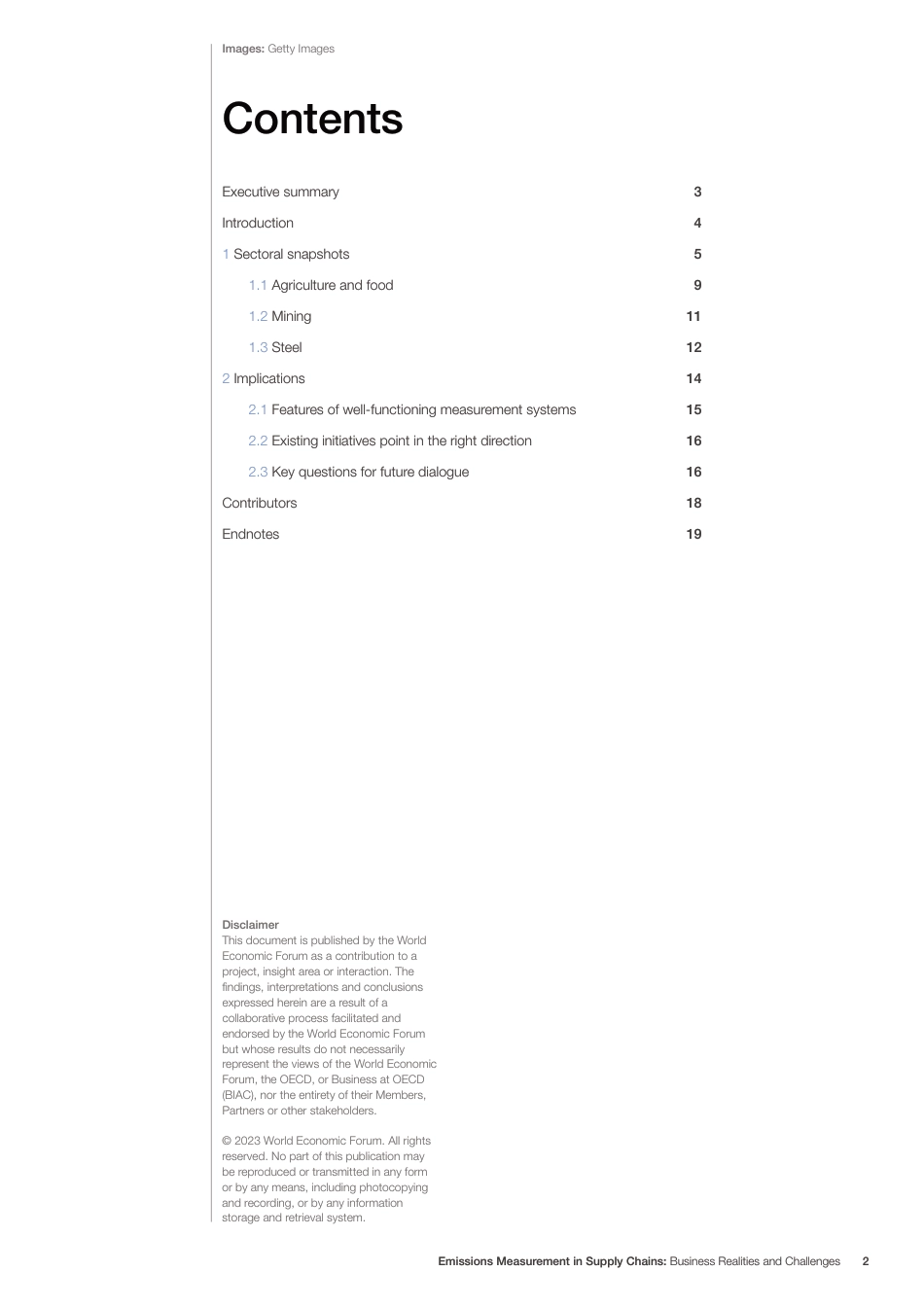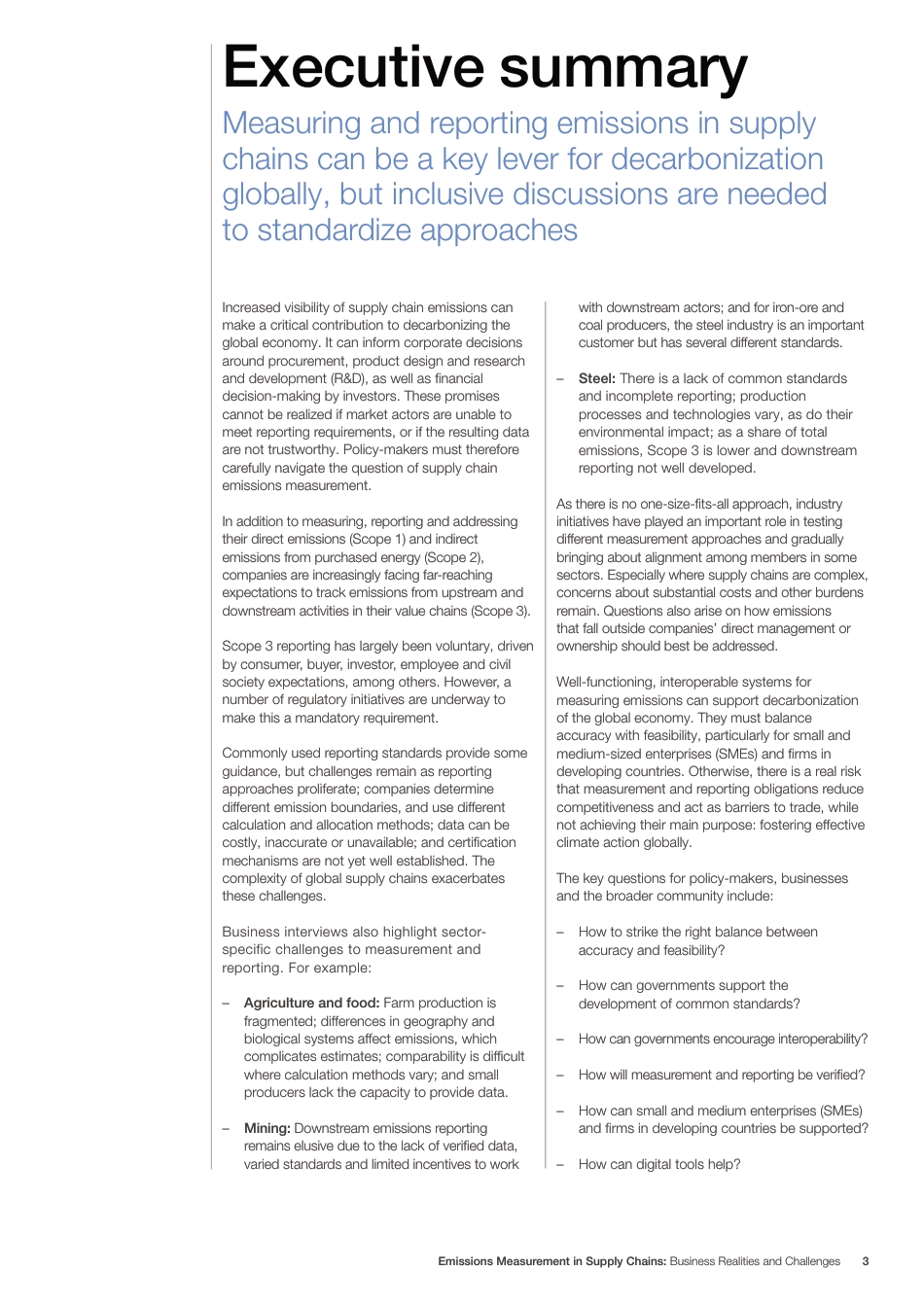Emissions Measurement in Supply Chains: Business Realities and ChallengesW H I T E P A P E RN O V E M B E R 2 0 2 3ContentsImages: Getty Images© 2023 World Economic Forum. All rights reserved. No part of this publication may be reproduced or transmitted in any form or by any means, including photocopying and recording, or by any information storage and retrieval system.Disclaimer This document is published by the World Economic Forum as a contribution to a project, insight area or interaction. The findings, interpretations and conclusions expressed herein are a result of a collaborative process facilitated and endorsed by the World Economic Forum but whose results do not necessarily represent the views of the World Economic Forum, the OECD, or Business at OECD (BIAC), nor the entirety of their Members, Partners or other stakeholders.Executive summaryIntroduction1 Sectoral snapshots 1.1 Agriculture and food1.2 Mining1.3 Steel2 Implications 2.1 Features of well-functioning measurement systems2.2 Existing initiatives point in the right direction2.3 Key questions for future dialogueContributorsEndnotes34591112141516161819Emissions Measurement in Supply Chains: Business Realities and Challenges2Executive summaryIncreased visibility of supply chain emissions can make a critical contribution to decarbonizing the global economy. It can inform corporate decisions around procurement, product design and research and development (R&D), as well as financial decision-making by investors. These promises cannot be realized if market actors are unable to meet reporting requirements, or if the resulting data are not trustworthy. Policy-makers must therefore carefully navigate the question of supply chain emissions measurement.In addition...



